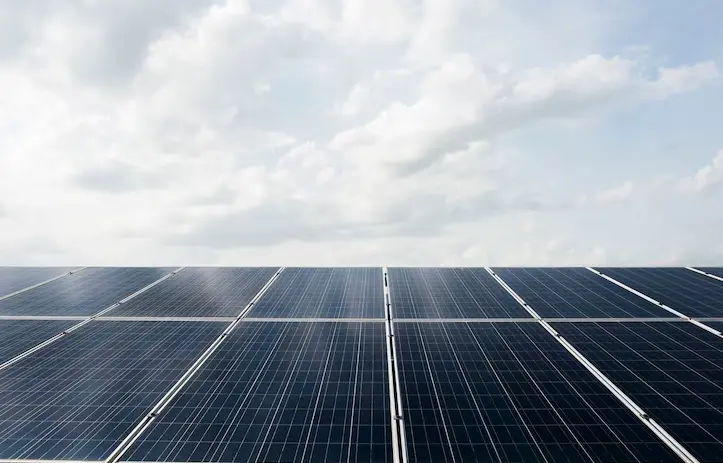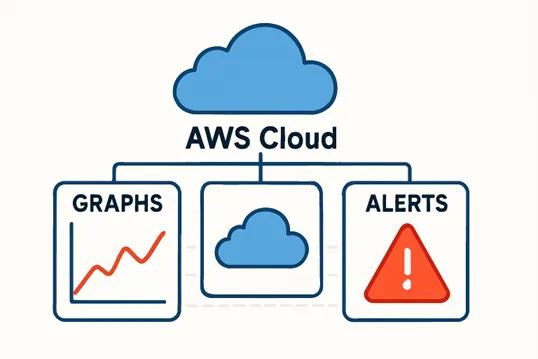Energy costs across Ontario continue climbing year after year, leaving homeowners searching for alternatives that could provide both environmental benefits and genuine financial relief from rising energy bills. Home energy systems present a compelling solution that transforms monthly electricity bills into long-term investments. Rather than watching utility expenses steadily increase, property owners can take control of their energy future through strategic planning and smart technology choices.
Solar installation Ontario has gained tremendous momentum as residents discover the genuine economic advantages these systems deliver over decades of operation. Provincial incentives combined with federal programmes create an attractive financial landscape that makes renewable energy accessible to typical households. The technology has matured significantly, offering reliable performance that justifies the initial investment through consistent energy production. Understanding these financial mechanisms helps homeowners make informed decisions about their energy independence journey.
Understanding Ontario’s Solar Incentive Landscape
Provincial Net Metering Benefits: Ontario’s net metering programme allows homeowners to sell excess electricity back to the grid at competitive rates, creating a two-way energy relationship that maximises system value. This arrangement means your solar panels can generate income during peak production periods whilst reducing costs during lower generation times. The programme operates through straightforward billing credits that appear directly on monthly statements, making tracking savings simple and transparent. Property owners often discover that summer overproduction significantly offsets winter consumption, creating year-round financial benefits.
Federal Tax Credit Advantages: The federal government provides substantial support through the Canada Greener Homes Grant, offering up to $5,000 towards eligible solar installations that meet specific performance criteria. This programme reduces upfront costs whilst encouraging adoption of high-efficiency equipment that delivers superior long-term returns. Homeowners must complete energy assessments before and after installation, but the process ensures systems are properly sized and optimally configured. The combination of immediate rebates and ongoing energy savings creates a compelling financial foundation for solar investment.
Municipal Rebate Programmes: Many Ontario municipalities offer additional financial incentives that stack with provincial and federal programmes to further reduce installation costs. These local incentives vary by region but often include property tax exemptions, development charge reductions, or direct cash rebates for qualifying systems. Some communities provide expedited permitting processes that reduce soft costs associated with installation timelines. Research your specific municipality’s offerings, as these programmes can add thousands of dollars in additional value to your renewable energy investment.
Calculating Your Solar Return on Investment
System Sizing and Cost Analysis: Proper system sizing directly impacts your financial returns, with most Ontario homes requiring between 6-10 kilowatts of solar capacity to offset typical electricity consumption patterns. Installation costs generally range from $15,000 to $25,000 before incentives, depending on equipment quality, roof complexity, and local installation factors. Higher-quality components often justify their premium through extended warranties and superior performance that compounds over decades. Working with qualified installers ensures accurate sizing that maximises both energy production and financial returns.
Annual Savings Projections: Ontario homeowners typically save between $1,200 and $2,400 annually on electricity bills through properly sized solar installations, with exact amounts depending on consumption patterns and system performance. These savings grow over time as electricity rates increase whilst your solar production remains consistent and predictable. Most systems pay for themselves within 8-12 years, then provide decades of free electricity that represents pure financial gain. The key lies in understanding your specific usage patterns and designing systems that align with your consumption habits.
Long-term Value Creation: Solar panels carry 25-year performance warranties that guarantee specific energy production levels, providing financial predictability that traditional energy sources cannot match. System components often continue producing electricity well beyond warranty periods, with many installations operating effectively for 30-40 years with minimal maintenance requirements. This extended lifespan means your investment continues generating value long after the payback period, creating substantial wealth preservation benefits. Property values also increase with solar installations, providing additional financial advantages if you decide to sell.
Managing Installation Investment Strategies
Financing Options and Benefits: Multiple financing approaches allow homeowners to install solar systems without large upfront payments, including loans, leases, and power purchase agreements that align costs with savings. Solar loans often feature competitive interest rates that keep monthly payments below current electricity costs, creating immediate positive cash flow from day one. Some programmes offer deferred payment options that allow systems to generate savings before payments begin, reducing financial pressure during the transition period. Compare financing terms carefully, as different structures can significantly impact overall returns.
Cash Purchase Advantages: Homeowners who can purchase systems outright typically achieve the highest returns on investment, avoiding interest charges whilst maximising incentive benefits and long-term savings. Cash purchases provide complete system ownership from installation, ensuring all energy production and financial benefits flow directly to the homeowner without ongoing obligations. This approach offers the fastest payback periods and highest lifetime returns, making it ideal for those with available capital. Consider liquidating low-yield investments to fund solar installations, as the returns often exceed traditional investment vehicles.
Equipment Quality Considerations: Investing in higher-quality components typically provides superior long-term returns despite increased upfront costs, with premium panels and inverters delivering better performance and reliability over decades. Tier-1 solar panels often include stronger warranties and proven track records that reduce replacement risks and maintenance expenses throughout system lifespans. Quality inverters ensure optimal energy conversion and monitoring capabilities that help identify and resolve performance issues quickly. The difference between budget and premium equipment compounds over years, making quality investments worthwhile for serious energy independence.
Maximising Energy Production and Savings
Seasonal Performance Patterns: Ontario’s solar resource varies significantly throughout the year, with summer production often exceeding consumption whilst winter generation requires grid supplementation for complete energy needs. Understanding these patterns helps homeowners optimise their energy usage and maximise net metering benefits by shifting discretionary consumption to high-production periods. Spring and autumn typically provide the best balance between production and consumption, creating optimal conditions for system performance evaluation. Design systems with annual production targets rather than monthly goals to achieve the best financial outcomes.
Energy Efficiency Integration: Combining solar installations with home energy efficiency improvements creates synergistic benefits that reduce system size requirements whilst maximising overall savings potential. Upgrading insulation, windows, and heating systems before installing solar often provides better returns than oversizing solar systems to compensate for inefficient energy use. LED lighting conversions and ENERGY STAR appliances reduce base consumption, allowing smaller solar systems to achieve greater energy independence percentages. This integrated approach optimises both upfront investment and long-term performance.
Smart Energy Management: Modern solar installations include monitoring systems that provide detailed insights into energy production and consumption patterns, enabling homeowners to optimise their usage for maximum financial benefit. Time-of-use electricity rates create opportunities to shift consumption to periods when solar production is high and grid rates are low. Battery storage systems can further enhance these benefits by storing excess production for use during peak rate periods or power outages. Smart home technologies can automate these optimisations, ensuring maximum savings without requiring constant attention.
Key Financial Benefits You Should Consider
Understanding the complete financial picture helps homeowners make informed decisions about solar investments:
- Immediate Bill Reduction: Monthly electricity costs decrease from the first day of operation, providing instant gratification alongside long-term benefits
- Inflation Protection: Fixed energy production costs shield homeowners from rising electricity rates that typically increase 3-5% annually
- Property Value Enhancement: Solar installations typically increase home values by 3-4% whilst making properties more attractive to environmentally conscious buyers
- Maintenance Savings: Solar systems require minimal maintenance compared to traditional heating and cooling systems, reducing ongoing home operation expenses
- Energy Security: Reduced dependence on grid electricity provides protection against power outages and supply disruptions that can be costly and inconvenient
Understanding Performance and Durability
Weather Resilience and Output: Ontario’s climate provides excellent solar resources despite common misconceptions about winter performance, with snow actually improving panel efficiency through enhanced light reflection. Modern panels perform well in cold temperatures and can generate significant electricity even on overcast days through diffused sunlight. Proper installation angles and spacing prevent snow accumulation issues whilst maximising year-round energy capture. Systems continue operating effectively in temperatures well below freezing, making them suitable for Ontario’s diverse climate conditions.
Maintenance Requirements and Costs: Solar installations require remarkably little maintenance beyond occasional cleaning and annual performance monitoring, with most systems operating trouble-free for decades with minimal intervention. Panel warranties typically cover manufacturing defects for 25 years, whilst inverter warranties range from 10-25 years depending on technology choices. Most maintenance involves visual inspections and basic cleaning that homeowners can perform themselves, though professional inspections every few years help ensure optimal performance. Budget approximately $200-400 annually for professional maintenance if desired, though many homeowners handle basic upkeep independently.
Performance Monitoring and Optimisation: Modern solar installations include sophisticated monitoring systems that track energy production in real-time, alerting homeowners to performance issues before they significantly impact financial returns. These systems often include smartphone applications that provide detailed insights into energy generation, consumption patterns, and system health metrics. Monitoring helps identify partial shading issues, equipment problems, or grid connection concerns that could reduce system effectiveness. Regular performance review ensures systems continue delivering expected financial benefits throughout their operational lifespans.
Planning Your Solar Investment Journey
Assessment and Design Process: Professional energy assessments evaluate your property’s solar potential, considering roof orientation, shading, structural capacity, and electrical system compatibility to ensure optimal system design. These evaluations typically include detailed financial projections that account for your specific consumption patterns, local incentives, and utility rate structures. Proper assessments prevent oversizing or undersizing issues that can reduce financial returns, ensuring your investment aligns with your energy independence goals. Most reputable installers provide comprehensive assessments that form the foundation for successful solar projects.
Timeline and Installation Considerations: Solar installations typically require 2-4 months from initial consultation to system activation, including permitting, equipment procurement, installation, and utility interconnection processes. Installation itself usually takes 1-3 days depending on system size and roof complexity, with minimal disruption to daily routines during the construction phase. Proper planning ensures installations occur during optimal weather windows whilst allowing adequate time for paperwork and approvals. Understanding realistic timelines helps homeowners coordinate installations with other home improvement projects or seasonal considerations.
Long-term Ownership Benefits: Solar system ownership provides decades of predictable energy costs that shield homeowners from utility rate volatility whilst building substantial equity through avoided electricity purchases. Systems typically continue producing electricity well beyond their warranty periods, often operating effectively for 30-40 years with minimal performance degradation. This extended operational life creates tremendous value that compounds over time, making solar installations one of the most reliable long-term investments available to homeowners. Complete ownership ensures all benefits flow directly to the property owner without ongoing fees or obligations.
Conclusion
Solar energy systems represent one of the most compelling investments available to Ontario homeowners, combining immediate bill savings with decades of predictable financial returns that outperform many traditional investment vehicles. The combination of generous incentive programmes, mature technology, and rising electricity rates creates an ideal environment for solar adoption that delivers both environmental and economic benefits. Smart homeowners who take action now position themselves for energy independence whilst building long-term wealth through reduced utility expenses. Take the first step towards energy freedom by requesting a professional solar assessment that reveals your property’s potential for generating clean, profitable electricity for decades to come.
Also Read-How LED Strip Lights Suppliers Help You Save on Bulk Orders





